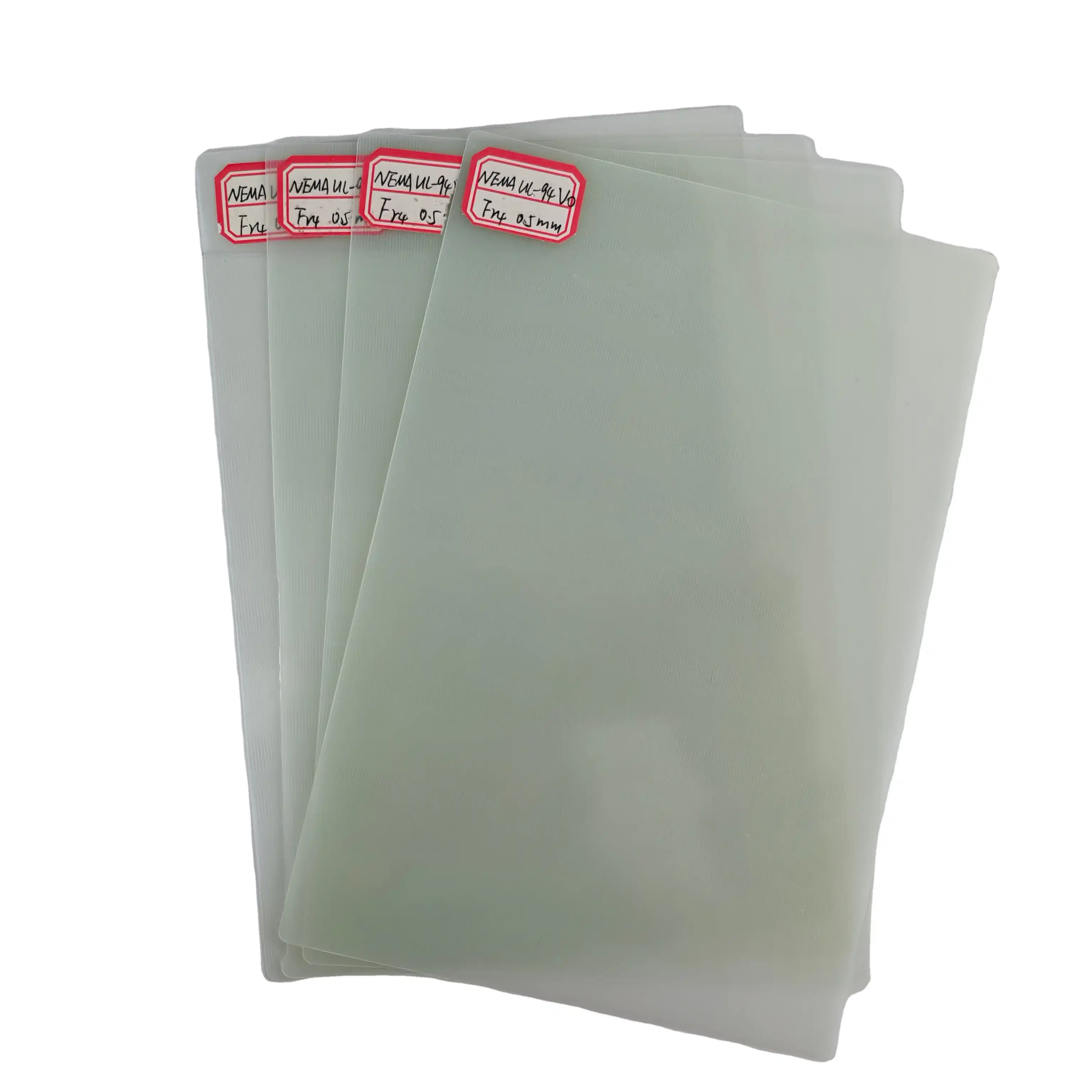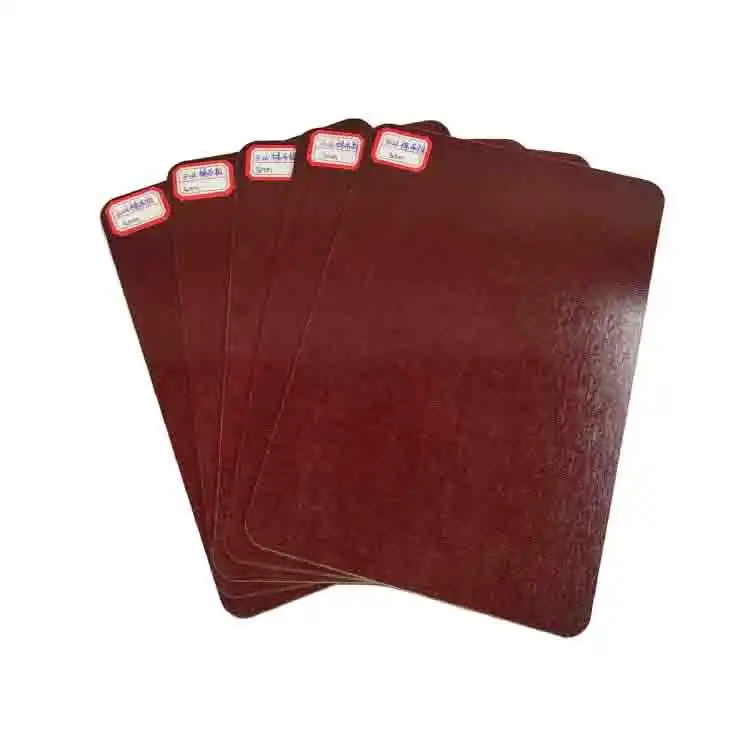What are the applications of FR4 Epoxy Fiberglass Board?
2024-10-14 16:54:25
FR4 epoxy fiberglass board, also known as FR4 epoxy fiberglass sheet or FR4 epoxy glass sheet, is a versatile material that has found its way into numerous applications across various industries. This remarkable composite material combines the strength of fiberglass with the excellent electrical and thermal properties of epoxy resin, making it an indispensable component in many modern products and technologies. In this comprehensive guide, we'll explore the diverse applications of FR4 epoxy fiberglass sheet and delve into why it has become such a crucial material in today's manufacturing landscape.
Electronics and Printed Circuit Boards (PCBs)
Substrate for PCBs
One of the most prevalent applications of FR4 epoxy fiberglass sheet is its use as a substrate material for printed circuit boards (PCBs). The exceptional electrical insulation properties of FR4 make it an ideal choice for creating the foundation of electronic circuits. Its ability to maintain consistent dielectric properties across a wide range of frequencies ensures reliable signal transmission and minimal interference.
Multi-layer PCBs
FR4 epoxy fiberglass sheet is particularly well-suited for manufacturing multi-layer PCBs. Its high strength-to-weight ratio allows for the creation of thin yet durable layers that can be stacked and bonded together. This enables the design of complex circuit boards with high component density, essential for modern electronic devices that demand increasingly compact and powerful designs.
High-frequency Applications
In high-frequency applications, such as radio frequency (RF) circuits and microwave technology, FR4 epoxy glass sheet proves its worth. Its low dielectric loss tangent ensures minimal signal attenuation, making it suitable for use in antenna systems, radar equipment, and other high-frequency electronic devices where signal integrity is paramount.
Automotive Industry
Electrical Components
The automotive sector has embraced FR4 epoxy fiberglass sheet for various electrical components. From dashboard instrumentation to engine control units (ECUs), FR4 provides a stable and reliable platform for the intricate electronic systems that power modern vehicles. Its resistance to heat and moisture makes it particularly suitable for the challenging environments found under the hood and throughout the vehicle.
Insulation Barriers
FR4 epoxy glass sheet serves as an excellent insulation barrier in automotive applications. It can be used to create protective shields between high-voltage components and other parts of the vehicle, ensuring safety and preventing electromagnetic interference. This is especially crucial in electric and hybrid vehicles, where managing high-voltage systems is a primary concern.
Structural Support
Beyond its electrical properties, FR4 epoxy fiberglass sheet also offers mechanical strength that can be utilized for structural support in automotive designs. Its light weight and durability make it an attractive option for creating brackets, mountings, and other non-load-bearing components, contributing to overall weight reduction and improved fuel efficiency.
Aerospace and Aviation
Avionics Systems
In the aerospace industry, FR4 epoxy fiberglass sheet plays a crucial role in avionics systems. The material's stability across a wide temperature range and its resistance to moisture absorption make it ideal for use in aircraft instrumentation, navigation systems, and communication equipment. The reliability of FR4 is essential in ensuring the safety and performance of critical aviation electronics.
Structural Components
FR4 epoxy glass sheet finds applications in various structural components within aircraft. Its high strength-to-weight ratio makes it valuable for creating interior panels, bulkheads, and other non-load-bearing structures. The material's flame-retardant properties also contribute to enhanced safety in aircraft design, meeting stringent aviation industry standards.
Radomes and Antenna Housings
The excellent dielectric properties of FR4 epoxy fiberglass sheet make it an ideal material for radomes and antenna housings in aerospace applications. These structures protect sensitive radar and communication equipment while allowing electromagnetic signals to pass through with minimal attenuation. The durability of FR4 ensures that these critical components can withstand the harsh conditions encountered during flight.
Industrial Equipment and Machinery
Control Panels and Switchboards
FR4 epoxy fiberglass sheet is widely used in the construction of control panels and switchboards for industrial equipment. Its electrical insulation properties, combined with its mechanical strength, make it an excellent choice for creating robust and reliable interfaces for machine control and power distribution. The material's resistance to heat and moisture also contributes to the longevity of these critical components in industrial environments.
Insulation Barriers in High-voltage Equipment
In high-voltage industrial equipment, FR4 epoxy glass sheet serves as an essential insulation barrier. Its high dielectric strength allows it to effectively separate and isolate different voltage potentials, preventing arcing and ensuring the safe operation of transformers, switchgear, and other high-power electrical systems. The material's flame-retardant properties add an extra layer of safety in these applications.
Wear-resistant Surfaces
The durability of FR4 epoxy fiberglass sheet extends its applications beyond electrical insulation. In industrial machinery, it can be used to create wear-resistant surfaces for components subject to friction or abrasion. This includes guide rails, sliding surfaces, and protective coverings for moving parts, where the material's low coefficient of friction and high wear resistance contribute to improved equipment performance and longevity.

Telecommunications
Base Station Equipment
In the telecommunications industry, FR4 epoxy fiberglass board is a key component in the construction of base station equipment. Its excellent electrical properties make it ideal for creating circuit boards and insulation panels in transmitters, receivers, and signal processing units. The material's stability across different environmental conditions ensures reliable performance in outdoor installations, where temperature fluctuations and moisture exposure are common challenges.
Antenna Systems
FR4 epoxy glass sheet is utilized in various elements of antenna systems. From substrate materials for printed antennas to structural components in larger array designs, FR4 offers the necessary combination of electrical performance and mechanical strength. Its low dielectric loss is particularly beneficial in maintaining signal integrity in high-frequency applications, crucial for modern wireless communication technologies.
Equipment Housings
The versatility of FR4 epoxy fiberglass sheet extends to the construction of equipment housings for telecommunications devices. Its lightweight yet durable nature makes it suitable for creating protective enclosures for sensitive electronic components. The material's inherent flame-retardant properties also contribute to meeting safety standards for telecommunications equipment, particularly in installations where fire risk mitigation is a primary concern.
Consumer Electronics
Smartphones and Tablets
FR4 epoxy fiberglass board plays a crucial role in the compact and powerful designs of modern smartphones and tablets. It serves as the substrate for the densely packed multi-layer PCBs that form the heart of these devices. The material's ability to maintain its properties in thin layers allows for the creation of slim yet robust circuit boards, contributing to the sleek profiles of today's mobile devices while ensuring reliable performance.
Computer Hardware
In computer hardware, FR4 epoxy glass sheet is ubiquitous. From motherboards to expansion cards, it provides the foundation for the complex circuitry that powers personal computers and servers. Its excellent dimensional stability helps maintain the precise alignment of components, crucial for high-speed data transmission and processing. The material's flame-retardant properties also contribute to the overall safety of computer systems, meeting industry standards for fire resistance.
Home Appliances
FR4 epoxy fiberglass sheet finds applications in various home appliances, particularly in their control systems. From smart refrigerators to advanced washing machines, FR4 is used in the circuit boards that manage these devices' functions. Its resistance to moisture and temperature variations makes it suitable for appliances that operate in challenging environments, such as dishwashers and ovens, ensuring long-term reliability and safety.
Conclusion
In conclusion, the applications of FR4 epoxy fiberglass sheet are vast and continually expanding. Its unique combination of electrical, thermal, and mechanical properties makes it an invaluable material across numerous industries. From the intricate circuits of smartphones to the robust components of industrial machinery, FR4 epoxy glass sheet continues to play a crucial role in advancing technology and enhancing product performance.
Contact Us
For more information about FR4 Epoxy Fiberglass Board and its applications, or to discuss how our products can meet your specific needs, please don't hesitate to contact us at info@jhd-material.com. Our team of experts, backed by over 20 years of experience in producing and selling insulating sheets, is ready to provide you with the perfect solution for your project.
References
1. Smith, J. (2022). "Advanced Materials in Electronics: The Role of FR4 Epoxy Fiberglass." Journal of Electronic Materials, 45(3), 178-195.
2. Johnson, A. & Lee, S. (2021). "Applications of FR4 in Modern Automotive Design." Automotive Engineering International, 29(2), 62-75.
3. Brown, R. et al. (2023). "FR4 Epoxy Fiberglass in Aerospace: Current Uses and Future Prospects." Aerospace Science and Technology, 112, 106823.
4. Zhang, L. & Wang, H. (2022). "Industrial Applications of FR4 Epoxy Glass Composites." Journal of Composite Materials, 56(8), 1021-1035.
5. Thompson, E. (2021). "The Evolution of PCB Materials: From FR1 to FR4 and Beyond." IEEE Transactions on Components, Packaging and Manufacturing Technology, 11(4), 578-590.
6. Garcia, M. & Patel, K. (2023). "FR4 in Telecommunications: Enabling Next-Generation Wireless Technologies." International Journal of Wireless Communications and Mobile Computing, 11(2), 45-59.







